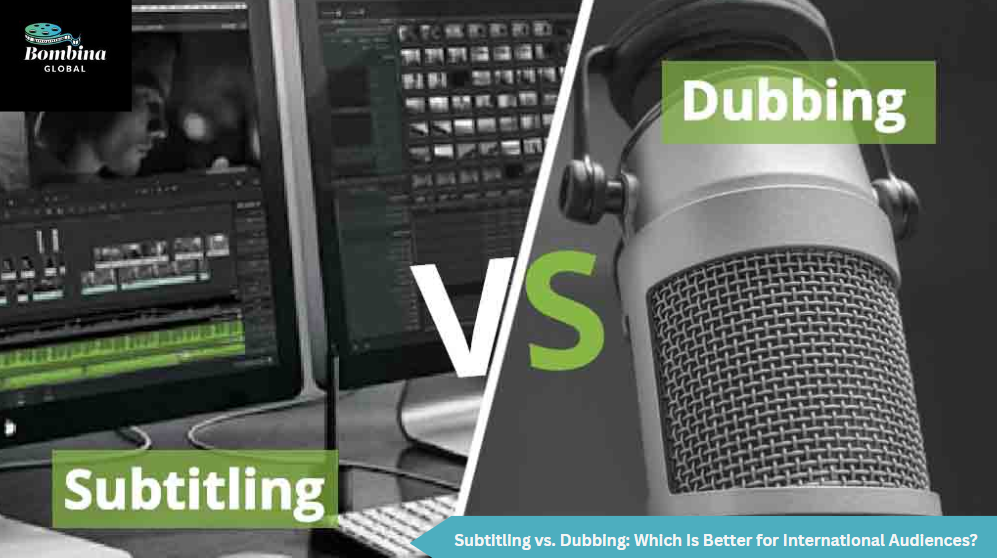Subtitling vs. Dubbing: Which Is Better for International Audiences?

When you create a video and want people in other countries to understand it, you need to ask yourself: Should I use subtitles or dubbing?
This is a big part of your global media strategy. If people can understand your video in their language, they are more likely to enjoy it, share it, and trust your message.
At Bombina Global, we help brands all over the world with international dubbing services and video localization. We make your videos ready for global viewers. Let’s talk about what subtitling and dubbing mean—and how to choose the best one for your audience.
What Are Subtitles?
Subtitles are the words that appear at the bottom of the video screen. These words translate what people are saying in the video. The sound stays in the original language, but viewers can read the translation.
Why Use Subtitles?
- It is cheaper than dubbing.
- It is faster to create.
- You can hear the real voice and emotion of the speaker.
- It’s great for people who are learning a new language.
Problems With Subtitles:
- Reading can be hard for some viewers, especially if the subtitles are fast.
- People may miss the visuals while reading.
- Children may not be able to read fast enough.
What Is Dubbing?
Dubbing is when you replace the original voice in the video with a new voice in another language. A voice actor records the lines in that language to match the video.
Why Use Dubbing?
- It sounds like the video was made in the viewer’s language.
- Viewers don’t have to read anything.
- It’s perfect for children or people who prefer listening over reading.
Problems With Dubbing:
- Dubbing is more expensive than subtitles.
- It takes more time and effort.
- Sometimes, the original emotion in the voice is lost.
Subtitles vs Dubbing: What Do People Prefer?
Different people and countries have different audience preferences.
- In India, Sweden, and the Netherlands, many people like subtitles.
- In Germany, France, and Spain, most people prefer dubbing.
The type of content also matters:
- For movies and shows, dubbing gives a better experience.
- For business videos, online learning, or news, subtitles work better.
- For children’s videos, dubbing is easier to follow.
How to Choose the Right One?
Here are some simple tips from Bombina Global to help you decide:
- Who is your audience?
What do people in that country prefer? - What is your budget?
Subtitles are cheaper. Dubbing costs more. - What kind of video is it?
Is it a fun show, a serious lesson, or a business video? - What is your goal?
Are you trying to teach, entertain, or sell something?
Sometimes, the best choice is to use both subtitles and dubbing. That way, you can reach even more people and give them a choice.
How Bombina Global Can Help
At Bombina Global, we make video translation simple. We offer high-quality international dubbing services and expert video localization. We work with professional voice actors, translators, and editors.
We help with:
- Movies and shows
- YouTube and social media videos
- E-learning content
- Marketing and business videos
- Mobile apps and games
Our team makes sure your video feels natural and clear in every language. We focus on what your audience wants and help you grow around the world.
Final Thoughts
There is no one “right” answer in the subtitles vs dubbing debate. It depends on your video, your budget, and who you want to reach.
- Subtitles are quick, cheap, and keep the original voice.
- Dubbing is natural-sounding and easy for people to enjoy without reading.
No matter what you choose, Bombina Global is here to help. We make sure your videos connect with people, no matter where they live or what language they speak. Bombina Global can help with dubbing, subtitles, and full video localization. Let’s make your content ready for global success. Contact us today

